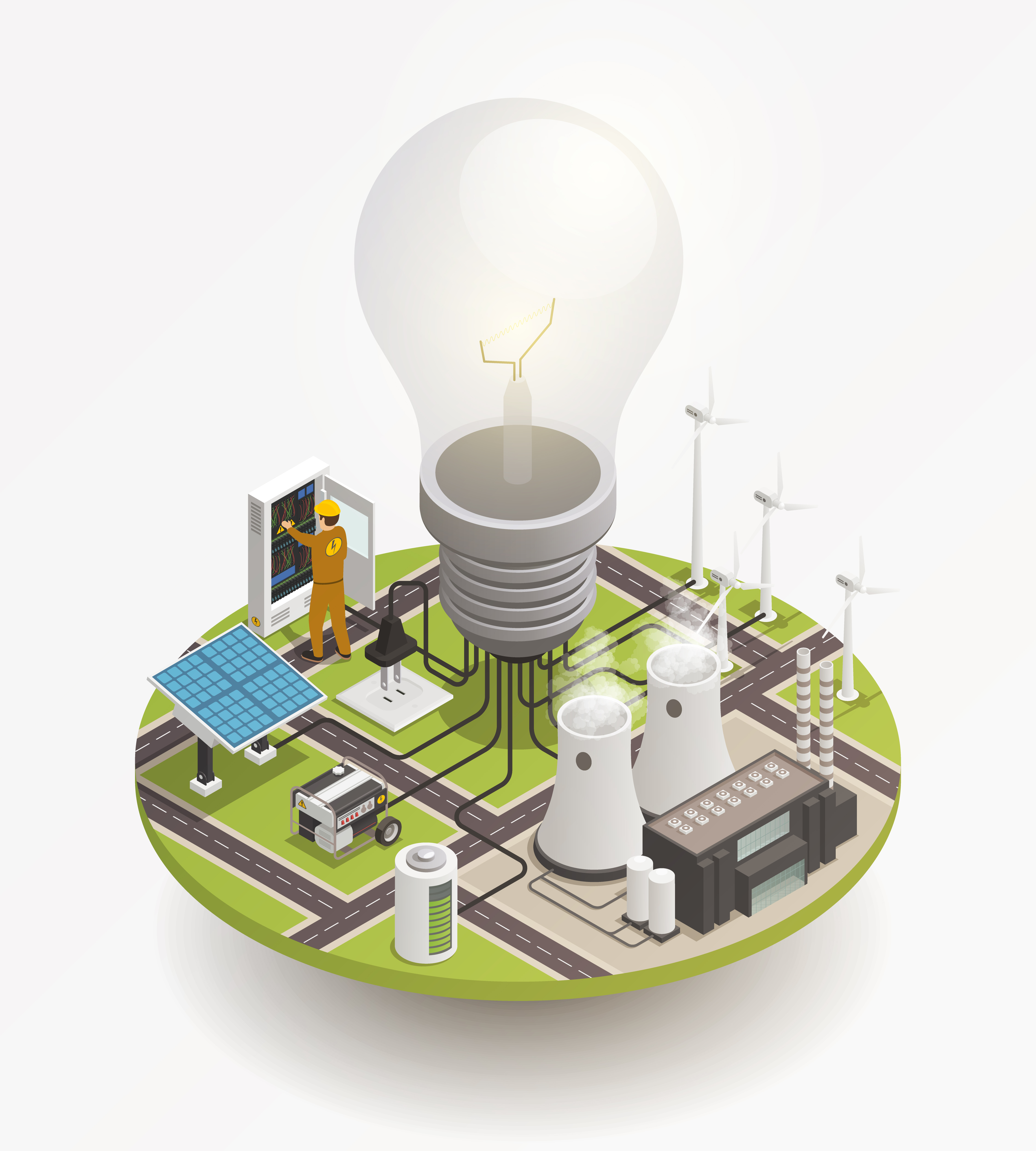5.1.2 Lecture Notes Intelligent planning and operation of multi-energy systems
Course subject(s)
5. Multi-carrier Grid Integration

This image is from freepik
This lecture will introduce the planning and operation of multi-energy systems. The following topics will be covered:
- The definition of a multi-energy system
- The main characteristics of a multi-energy system
- The planning and operation of a multi-energy system
The definition
A multi-energy system is an energy system that is comprised of different energy carriers with the capability of energy conversion between these carriers. The energy carriers that are most routed through networks are:
- Electricity
- Natural gas
- Heat
The size of a network can vary from small scale (local neighbourhood level) to large scale (continent-wide level). While electricity networks are everywhere in the developed world, some countries also have a complex grid for natural gas, which is used for cooking and heating. Heating networks are more found in the form of district heating networks in urban areas. Recently, hydrogen is becoming a more important as an energy carrier as a replacement of natural gas.
The characteristics
Multi-energy systems can be characterized with different aspects. An important characteristic is the infrastructure. The electricity and gas grids are usually composed of transmission and distribution networks. Transmission networks function as corridors that connect different parts of the country, whereas distribution networks connect the consumption to the transmission grid.
For an electricity grid, the most important differences between the transmission and distribution networks are the voltages and the power being transmitted. Transmission grids typically has a voltage in the range of 100 kilovolts and transmit power in the range of 1000 megawatts, while distribution grids have a voltage of around 10 kilovolts and transmit power less than a megawatt. Another difference is that losses in the distribution grid are typically higher (around 20%) than losses in the transmission grid (5%).
For a natural gas grid, the most important difference between the transmission grid and distribution grid is the pressure. The transmission side typically has a pressure of several tens of bar, while the distribution side has a pressure of several bars. A high temperature heat grids typically operate at a temperature below 100 degrees Celsius.
A different characteristic is the energy conversion between different energy carriers. Natural gas and heating grids have an important advantage over electricity grids, which is that energy can be stored in the grid itself. In a natural gas grid, this storage is called “line-pack” and it can store enough energy for a couple of hours. Because the electricity grid cannot store energy in the grid itself, natural gas can be used to store energy. In the future renewable grid, hydrogen will be used for this. To store energy in a different energy carrier, the energy needs to be converted. This can be done in different ways:
- Heat pumps can be used to convert electricity into heat
- Gas and hybrid boilers can be used to convert gas into heat
- Combined heat and power (CHP) plants can be used to convert natural gas into electricity
- Electrolysers can be used to convert electricity into hydrogen
- Fuel cell can be used to convert hydrogen into electricity
The last characteristic that will be discussed is the ownership structure. Multi-energy systems are almost always owned and operated by different organisations. Even for a single energy carrier, the transmission and distribution side are often operated by different parties. Because multiple parties are involved, the planning and operation of the grids needs to be strongly aligned.
Planning and operation
In the planning of a multi-energy system there are different trade-offs that need to be considered for the design of the system. As an example, in an industrial site a choice can be made between installing small boilers in each factory, or just installing one big boiler to produce all the heat. Installing only one big boiler has the advantage of the economy of scale, but it also creates a single point of failure. Also, the transmission losses, conversion losses, and the location of the components need to be considered.
When operating the multi-energy system, it needs to be ensured that the needs of one system are aligned with the capabilities of the other system. As mentioned before, the electricity grid cannot store energy in itself, whereas gas and heat grids can store energy. A gas of heat grid can then be aligned with the electricity grid to achieve energy storage.
Conclusion
This lecture introduces the topic of multi-energy systems. First its definition was explained, followed by a discussion on the different characteristics. These characteristics were infrastructure, energy conversion, and the ownership structure. Finally, the planning and the operation of the multi-energy system was discussed.

Technology of Intelligent and Integrated Energy Systems by TU Delft OpenCourseWare is licensed under a Creative Commons Attribution-NonCommercial-ShareAlike 4.0 International License.
Based on a work at https://online-learning.tudelft.nl/courses/technology-of-intelligent-and-integrated-energy-systems/



